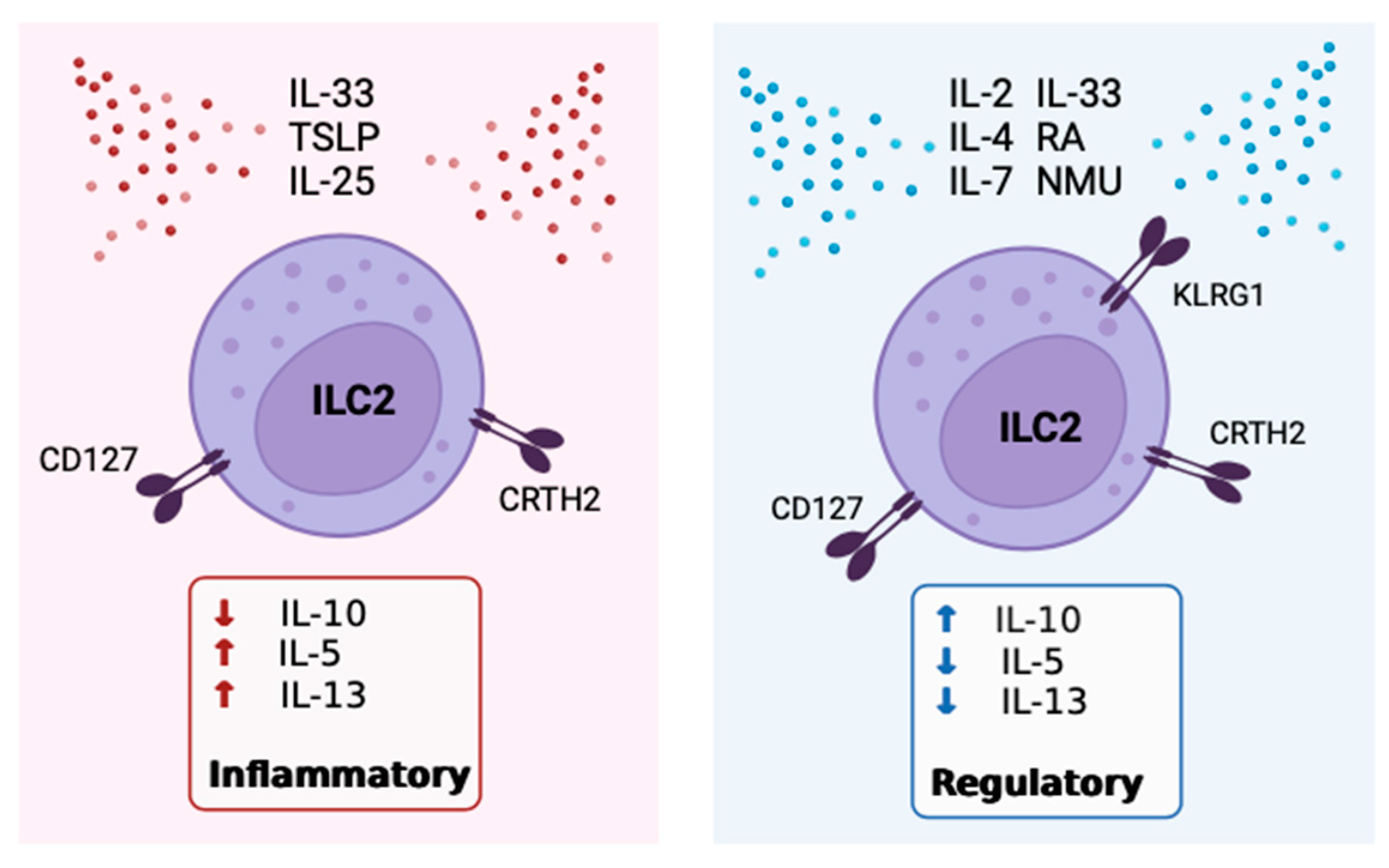Emami Fard N, Xiao M, Sehmi R. Cells. 2023 Oct 31;12(21):2556. doi: 10.3390/cells12212556.
Abstract

Over the past two decades, a growing body of evidence observations have shown group two innate lymphoid cells (ILC2) to be critical drivers of Type 2 (T2) inflammatory responses associated with allergic inflammatory conditions such as asthma. ILC2 releases copious amounts of pro-inflammatory T2 cytokines-interleukin (IL)-4, IL-5, IL-9, and IL-13. This review provides a comprehensive overview of the newly discovered regulatory subtype of ILC2 described in murine and human mucosal tissue and blood. These KLRG1+ILC2 have the capacity to produce the anti-inflammatory cytokine IL-10. Papers compiled in this review were based on queries of PubMed and Google Scholar for articles published from 2000 to 2023 using keywords “IL-10” and “ILC2”. Studies with topical relevance to IL-10 production by ILC2 were included. ILC2 responds to microenvironmental cues, including retinoic acid (RA), IL-2, IL-4, IL-10, and IL-33, as well as neuropeptide mediators such as neuromedin-U (NMU), prompting a shift towards IL-10 and away from T2 cytokine production. In contrast, TGF-β attenuates IL-10 production by ILC2. Immune regulation provided by IL-10+ILC2s holds potential significance for the management of T2 inflammatory conditions. The observation of context-specific cues that alter the phenotype of ILC warrants examining characteristics of ILC subsets to determine the extent of plasticity or whether the current classification of ILCs requires refinement.
